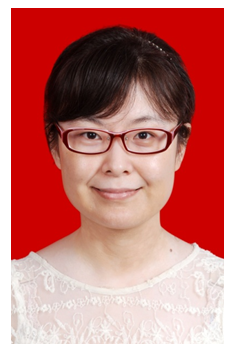
李秀敏,副教授/硕导。 2011年获香港理工大学电子信息工程专业博士学位。
教育背景
2001-2005 太原理工大学, 工学学士
2005-2007 天津大学, 工学硕士
2007-2011 香港理工大学,工学博士
2019/01-2019/12 加州大学尔湾分校,访问学者
专业领域:
计算神经科学、类脑计算、人工智能
主要研究方向:
计算神经科学、深度学习神经网络及其在智能计算中的应用。基于Spiking神经网络(Spiking Neural Network, SNN)的脑启发式人工智能,构建高精度低功耗的SNN计算模型,实现其在图像语音识别、信号重构、空间导航等智能计算中的应用。发表SCI论文20余篇。
主讲课程:
《智能控制基础》、《控制系统建模与仿真》。
科研情况简介:
先后主持国家自然科学基金项目、重庆市基础科学与前沿技术一般项目和重庆大学中央高校基金项目,参与纵向课题多项。现已发表境外SCI论文二十余篇;授权发明专利2项;担任IEEE Trans. on Neural Networks ,Neural Networks,Neurocomputing、Cognitive Neurodynamics等国外权威杂志正式审稿人。
主持或参加科研项目情况:
1. 重庆市自然科学基金面上项目,面向小样本图像识别的视觉认知计算模型研究,2019-2022,主持
2. 国家自然科学基金国际(地区)合作与交流项目,基于脑操作特性的控制理论及其在柔性灵巧欠驱机器人系统中的应用,2019-2021,参加。
3. 重庆市基础与前沿研究计划一般项目,基于事件驱动的Spiking 神经网络学习方法研究,2016-2019,主持
4. 国家自然科学基金面上项目,面向机器人的Spiking神经网络小储备池计算理论及其应用研究,2015-2018,主研
5. 国家自然科学基金青年科学基金项目,混合学习机制下神经网络的自组织演化与复杂分层结构的形成,2014-2016,主持
6. 重庆大学中央高校基本科研业务费专项资金项目,自组织神经网络的结构演化和动力学分析,2012-2015,主持
论文(选录)
[1] X. Li*, H. Yi, S. Luo. Pattern Recognition of Spiking Neural Networks Based on Visual Mechanism and Supervised Synaptic Learning[J]. Neural Plasticity, 2020, 2020(2):1-11.
[2] X. Li*, S. Luo, F. Xue. Effects of synaptic integration on the dynamics and computational performance of spiking neural network. Cognitive Neurodynamics 14, 2020, 347–357.
[3] A. Zhang, H. Zhou, X. Li* etc. Fast and robust learning in Spiking Feed-forward Neural Networks based on Intrinsic Plasticity mechanism. Neurocomputing. 2019 Nov 6;365:102-12.
[4] X. Li*,W. Wan, F. Xue, et al. Computational modeling of spiking neural network with learning rules from STDP and intrinsic plasticity[J]. Physica A Statistical Mechanics & Its Applications, 2018, 491.
[5] X. Li*, Q Chen, F. Xue, Biological modeling of computational spiking neural network with neuronal avalanches. Philosophical Transactions of the Royal Society A: Mathematical, Physical and Engineering Sciences. 2017 May 15;375(2096):20160286.
[6] X. Li*, H. Liu, F. Xue, H. Zhou, Y. Song. Liquid computing of spiking neural network with multi-clustered and active-neuron-dominant structure. Neurocomputing, 2017, 243.
[7] F. Xue, Q. Li, X. Li*. The combination of circle topology and leaky integrator neurons remarkably improves the performance of echo state network on time series prediction.[J]. Plos One, 2017, 12(7):e0181816.
[8] F. Xue, Q. Li, H. Zhou, X. Li*. Reservoir Computing with Both Neuronal Intrinsic Plasticity and Multi-Clustered Structure[J]. Cognitive Computation, 2017(5):1-11.
[9] X. Li*, Q Chen, F. Xue, Bursting dynamics remarkably improve the performance of neural networks on liquid computing. Cognitive Neurodynamics, 2016, 10(5):1-7.
[10] X. Li, L. Zhong, F. Xue*, A. Zhang. A Priori Data-Driven Multi-Clustered Reservoir Generation Algorithm for Echo State Network. PLOS ONE, 10(4): e0120750, 2015.
[11] H. Liu, Y. Song, F. Xue, X. Li*. Effects of bursting dynamic features on the generation of multi-clustered structure of neural network with symmetric spike-timing-dependent plasticity learning rule[J]. Chaos 25(11): 113108- 113108, 2015.
[12] X. Li*. Signal integration on the dendrites of a pyramidal neuron model. Cognitive Neurodynamics, 8 (1), 81-85, 2014.
[13] X. Li, Kenji Morita, Hugh Robinson*, Michael Small. Control of layer 5 pyramidal cell spiking by oscillatory inhibition in the distal apical dendrites: a computational modeling study. Journal of neurophysiology, 109 (11), 2739-2756, 2013.
[14] F. Xue*, Z. Hou, and X. Li. Computational capability of liquid state machines with spike-timing-dependent plasticity. Neurocomputing, 122: 324-329, 2013.
[15] X. Li* and Michael Small. “Neuronal avalanches of a self-organized neural network with active-neuron-dominant structure”. Chaos, 22 (2): 023104, 2012.
[16] X. Li*, K. Morita, H. P. C. Robinson and M. Small, “Impact of gamma-oscillatory inhibition on the signal transmission of a cortical pyramidal neuron”. Cognitive Neurodynamics 5 (2011) Issue 3 Page 241-251.
[17] X. Li* and M. Small, “Enhancement of signal sensitivity in a heterogeneous neural network refined from synaptic plasticity,”New Journal of Physics 12 (2010) 083045.
[18] X. Li*, J. Zhang and M. Small, “Self-organization of a neural network with heterogeneous neurons enhances coherence and stochastic resonance,” Chaos 19 (2009) 013126.
[19] J. Zhou, W. Yu, X. Li, M. Small and J. Lu*, “Identifying the topology of a coupled FitzHugh-Nagumo neurobiological network via a pinning mechanism,” IEEE Transactions on Neural Networks 20 (2009).
[20] X. Li, J. Wang, W. Hu, “Effects of chemical synapses on the enhancement of signal propagation in coupled neurons near the canard regime”, Physical Review E 76 (2007) 041902.
[21] F. Xue, Z. Hou, X. Li, N. Li. State switching optimization and global stability control strategy for underactuated two-link manipulator[J]. Chinese Journal of Scientific Instrument, 2012, 33(5):1035-1040.
[22] W. Hu, G. Xiao, and X. Li, “An analytical method for PID controller tuning with specified gain and phase margins for integral plus time delay processes”, ISA Transactions 50: 268–276 (2011).
[23] W. Hu, J. Wang, X. Li, “An approach of partial control design for system control and synchronization”, Chaos, Solitons & Fractals 39: 1410–1417 (2009).Dai Xin. Sun Yue, An Accurate Frequency Tracking Method Based on Short Current Detection for Inductive Power Transfer System. IEEE Transactions on Industrial Electronics, 61(2): 776-783, 2014
联系方式:
xmli@cqu.edu.cn
重庆市沙坪坝区沙正街174号重庆大学自动化学院


